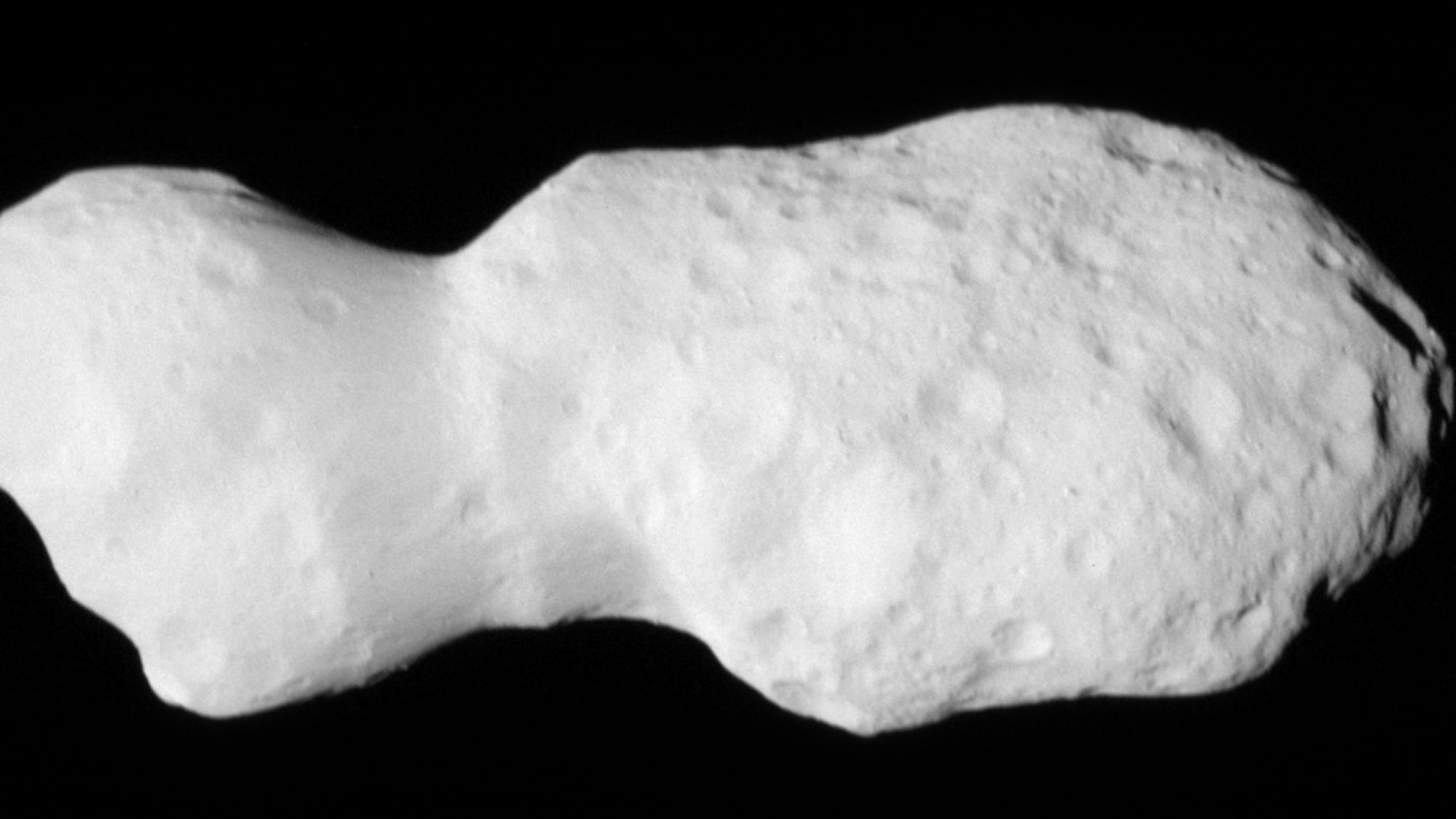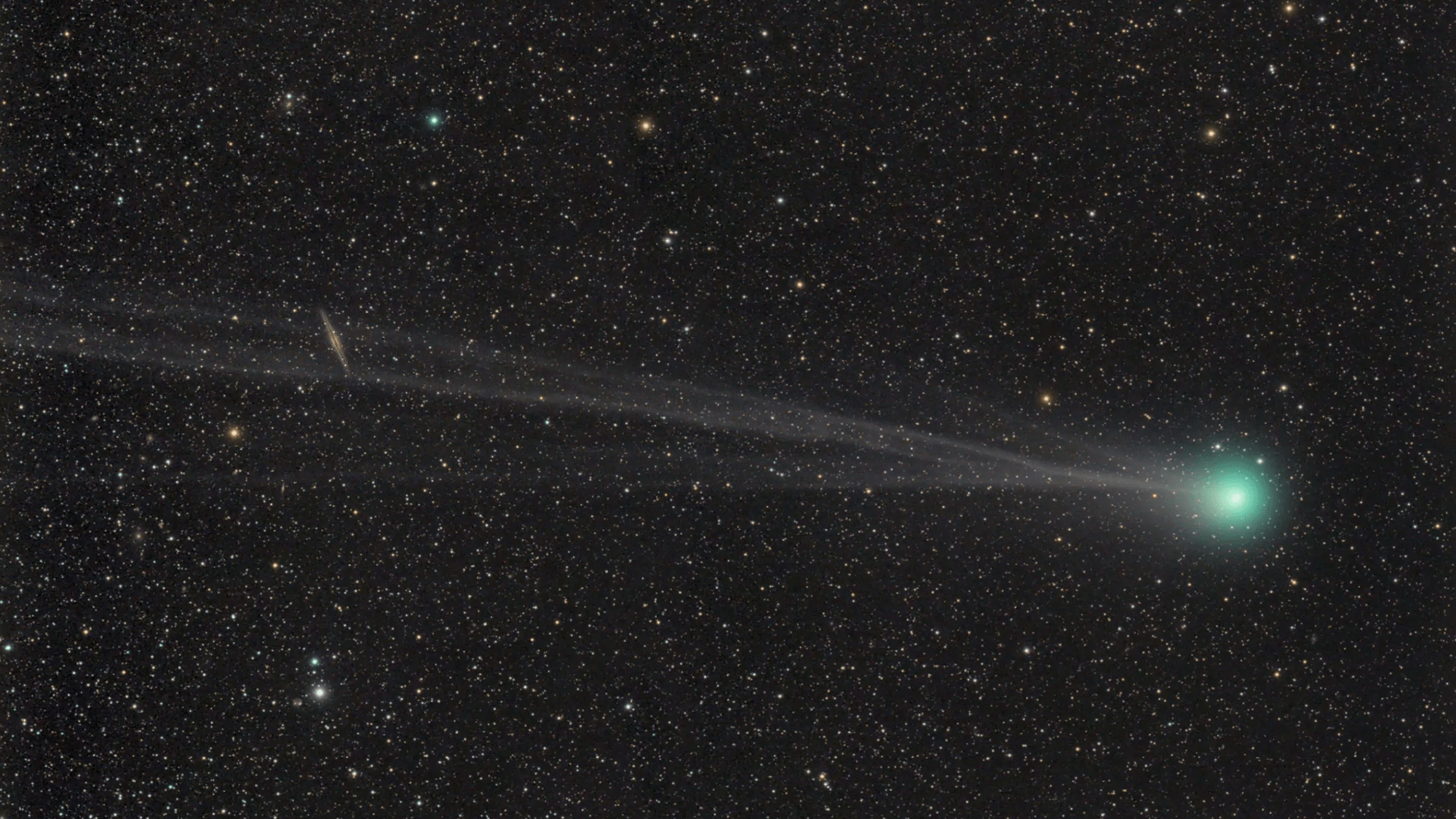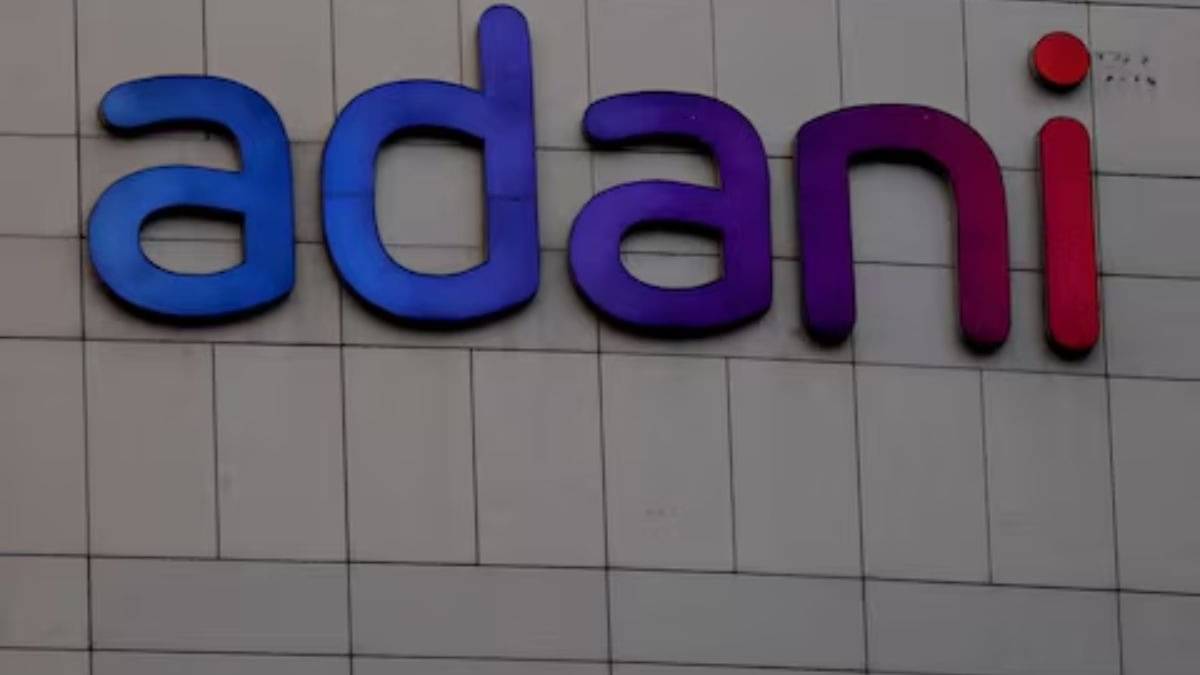Now Reading: NASA Captures Detailed Images of Complex Asteroid
-
01
NASA Captures Detailed Images of Complex Asteroid
NASA Captures Detailed Images of Complex Asteroid

Swift Summary:
- NASA’s Lucy spacecraft conducted its second asteroid flyby on April 20, capturing detailed images of the asteroid Donaldjohanson using its Long-Range Reconnaissance Imager (L’LORRI).
- The spacecraft came within 600 miles of Donaldjohanson, recording images at two-second intervals that reveal the asteroid’s complex geology.
- Initial observations suggest the elongated asteroid formed after a collision between smaller bodies and features a unique neck shape connecting its two lobes.
- Measurement data indicate Donaldjohanson is larger than expected-approximately 5 miles long and 2 miles wide.
- The flyby is part of Lucy’s mission to study 10 asteroids over a span of 12 years; this encounter comes 16 months after another flyby involving Dinkinesh (“Dinky”) and its satellite Selam.
- Researchers are awaiting additional data from other instruments aboard Lucy that will provide more insights into size, composition, and structure.
- Lucy will spend most of the remaining year in the main asteroid belt before targeting Jupiter Trojan Eurybates for observation in August 2027.
Indian Opinion Analysis:
NASA’s recent milestone with the Lucy spacecraft underscores humanity’s effort to understand planetary formation through detailed exploration. For india-which has made important strides in space technology such as ISRO’s Chandrayaan and upcoming missions-it serves as an inspiration for pursuing deep-space scientific studies. International collaborations or missions focused on exploring smaller celestial bodies could deepen India’s contribution to global astrophysics. research on asteroids can also inform practical concerns like planetary defense mechanisms-a growing area where Indian scientists might play key roles. As Lucy progresses towards future targets, it highlights how multi-year missions can be structured efficiently with cutting-edge imaging tools-a lesson relevant not just for scientific advancement but also for strategic space endeavors worldwide.
























